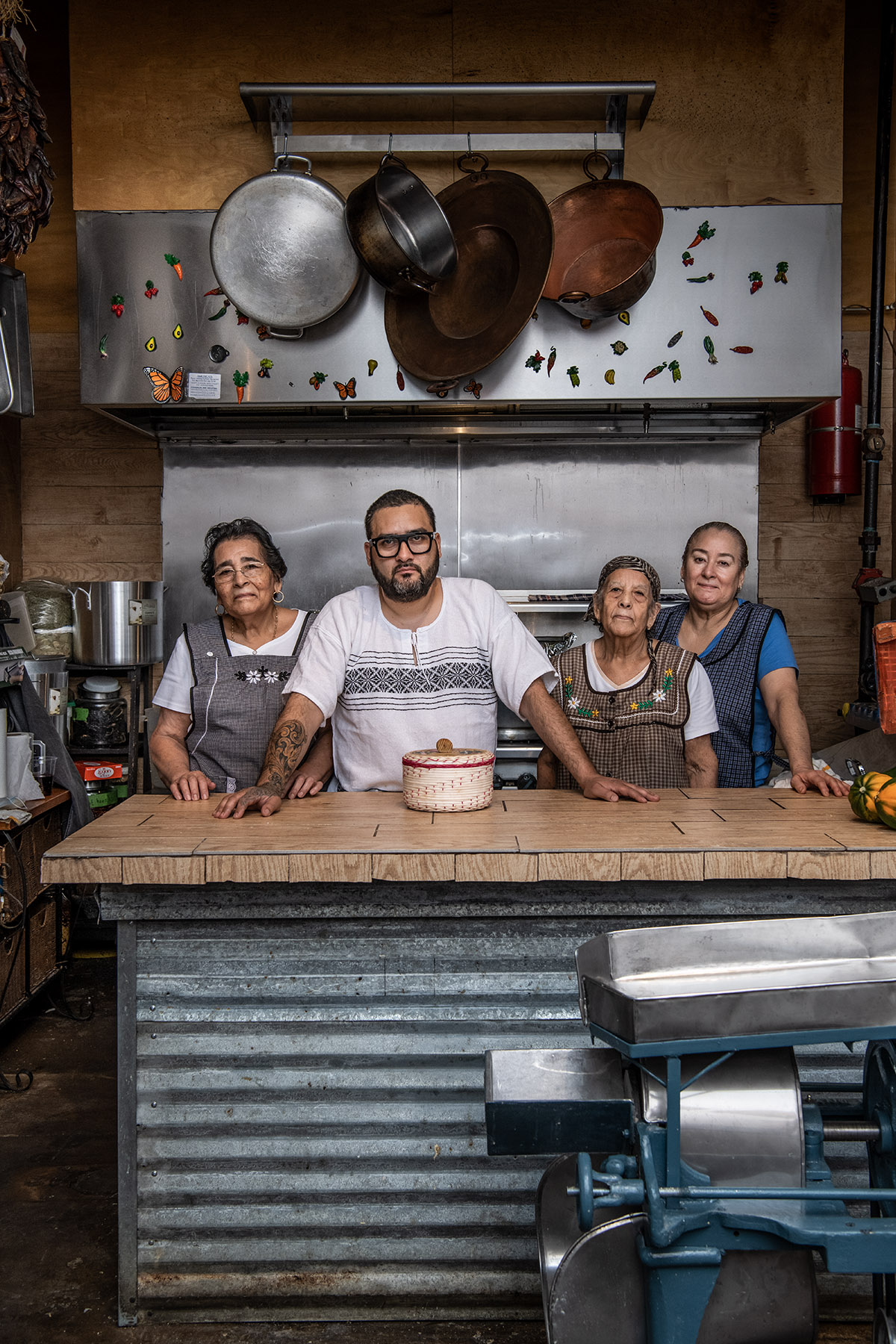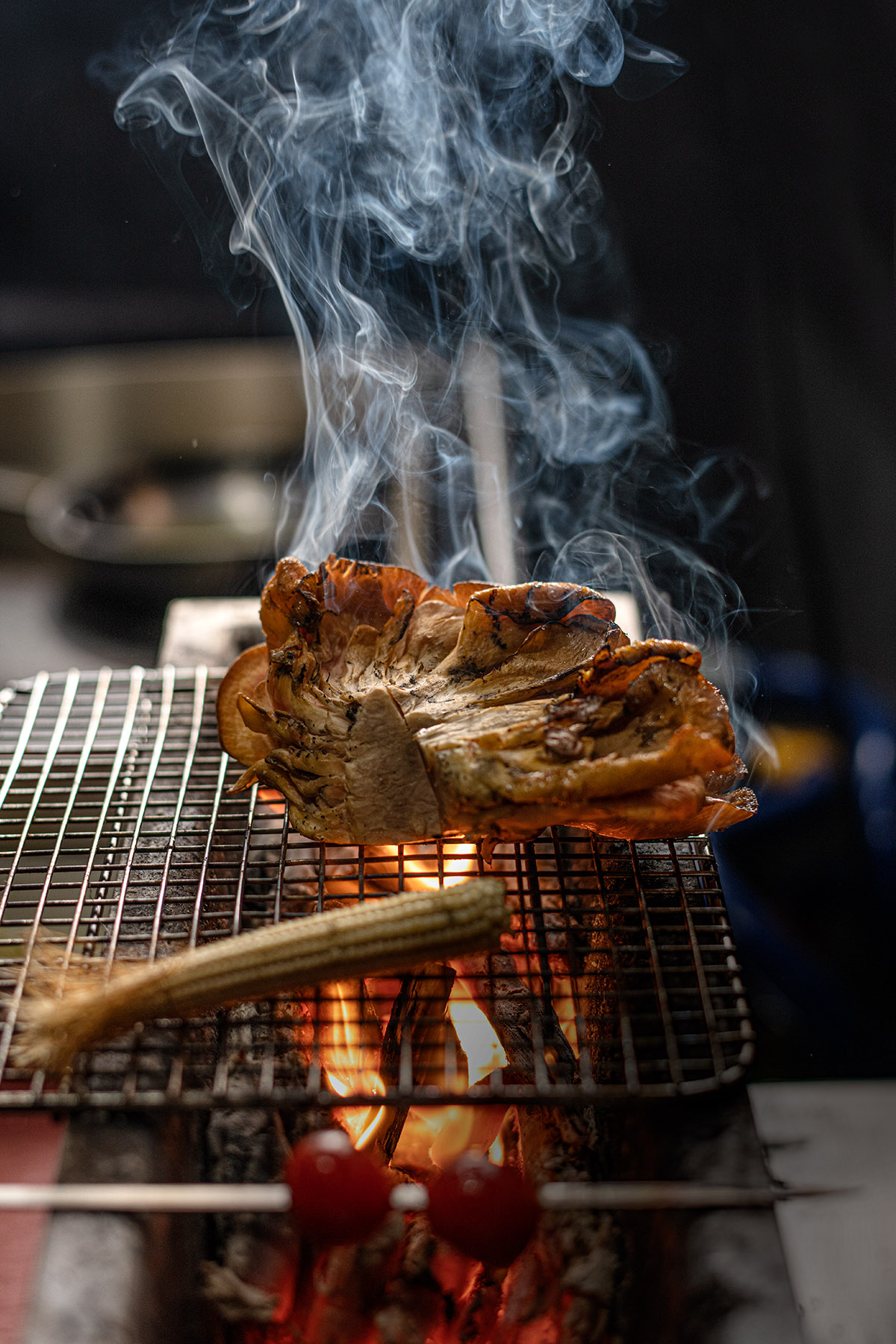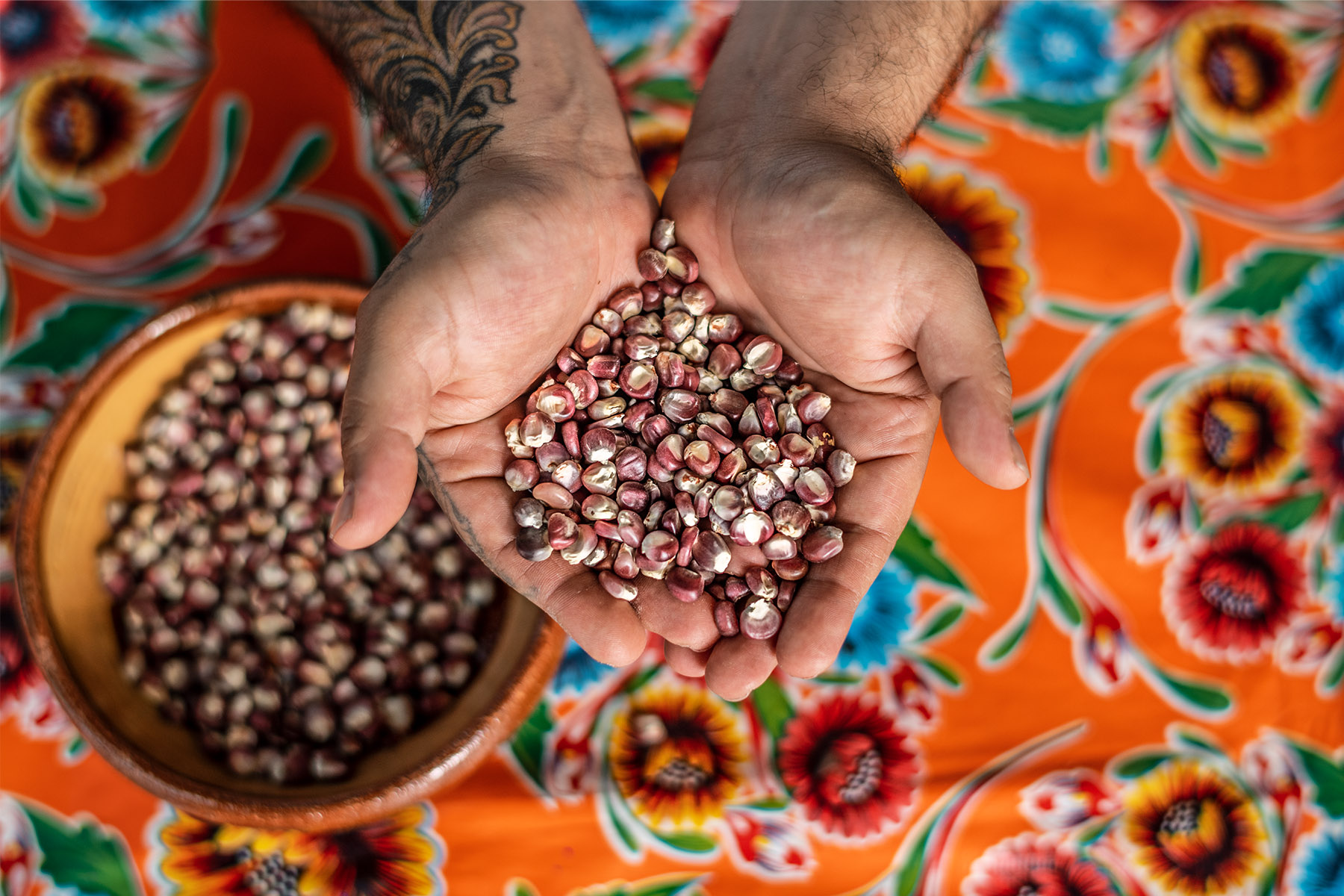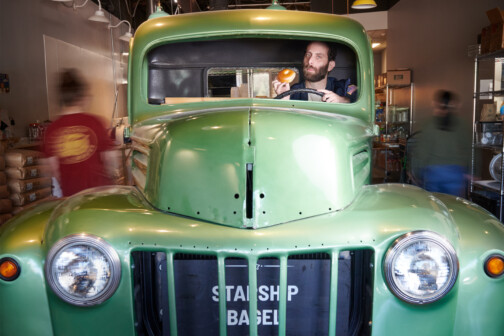As the restaurant world has grappled with how to reimagine itself, Regino Rojas has quietly worked to create a tiny tasting-menu enclave inside the front room of Revolver Taco Lounge. It debuted in June. Rojas dubbed the ambitious effort La Resistencia.
He knew he couldn’t reopen his Deep Ellum taqueria the way it had been. The single long communal table, of course, would make no sense. So he landed on this: a slim corridor of a dining room with only four appropriately spaced tables, carved out from the to-go operations happening on the other side of a dividing wall. At the door, there are temperature checks and a pump bottle of hand sanitizer. Servers glide by in black vests, black gloves, black-and-white bandana masks, and visors that shield their eyes. They are as edgy as the space, incognito like bandits.
For Rojas, the secret to high-end Mexican food lies in technique and tradition. That was his philosophy when he brought Dallas the Purépecha Room, his ode to romance in Revolver’s back room. In the intimate space, vintage gilt-edged plates served a tasting menu that offered both nostalgic and modern takes on regional Mexican cuisine. The focus was on the flavors produced by slow, ancient techniques and the integrity of the ingredients.
Rojas had always wanted to turn his attention more exclusively and militantly to corn. He didn’t know the pandemic, with its socially distant stipulations and small-batch focus, would allow him to do it. For La Resistencia, his goal was to build a tasting menu that would leave diners in wonder and awe at the shades and nuances of the heirloom grain. As a child in Mexico, he had taken the colors for granted. As an adult, he had become obsessed.
The quest for heirloom corn took Rojas back to Yurécuaro, where he was raised. A little more than a 19-hour drive south from Deep Ellum, slightly northwest of Mexico City, the town sits in the northwest corner of Michoacán, the state that touches the Pacific coast but hugs a swath of Central Mexico. This is where his mother, Juana, taught him to make tortillas by the time he was 4 years old.
He remembers his mother nixtamalizing the corn at night, swirling the kernels in lye water to remove the hulls and render them easier to grind. “She would wake up very early to grind it at the molino,” he says, “so she could make tortillas before my father woke up at 7 or 8 am.”

In Yurécuaro, Rojas says, it’s not uncommon for the woman in a household to nixtamalize corn daily and make tortillas, or to buy masa by the kilo at the mercado from a vendor who offers different freshly ground varieties daily. All the corn he remembers was maíz de milpa, raised in the Mayan and Aztec ancestral way in a three-crop planting system that unites maize (corn), squash, and beans. The name Yurécuaro itself comes from the indigenous Purépecha language, from words translated diversely as “place by the water” or “place where there are rivers”—a wet, fertile place where dirt roads might connect patchworks of fields, the majority only a few rain-fed hectares, cultivated without mechanization.
Rojas immigrated to the United States in 1995 and settled in Chicago before moving to Fort Worth, where he opened an antique-firearms business that he ran with his father. When his mother eventually joined them, Rojas thought of it as her opportunity to take it easy. “I didn’t want her to do anything. I just wanted her to relax,” he says. “That didn’t work.” Instead, she languished. Her despondency spurred what would become Revolver Taco Lounge, which began as a rented space with a small sign in the window and the two of them cooking.
“That’s part of the name, La Resistencia,” he says. “Because we’re defending all those seeds, the corns.”
Then came the pandemic and the plan for La Resistencia. While sheltering in place, Rojas sourced corn by proxy, enlisting the help of a friend who lives in Oaxaca and who sources corn for his own business. “He goes around and sees who has the best,” Rojas says. “He does the fieldwork for us. He goes to areas and certain families that already have a relation with them, so they can give you part of their production. The majority stays with them, and the rest they will sell locally. We pretty much need a person in the field, going and talking to people, driving around to these local communities, telling them, ‘There’s a crazy guy in Dallas that wants corn, and he’s willing to pay whatever you want for the corn.’ Because I do charge my tacos properly. And so whoever buys those tacos is providing for those families as well.”
He nixtamalizes the corn himself, soaking it in a lye solution to release the outer layer. And he invested several thousand dollars in a molino, a clattering hand-fed machine with a mechanical belt, to grind it. Each heirloom corn variety has a different grinding length and process, achieved by hand-spinning the screw-thread knobs of the machine. Blue corn stays grittier. Yellow is softer, smooth as a white sand beach, and almost buttery.
It’s clear Rojas sees himself as a Lorax of corn. In this, he aligns himself with a movement in Mexico City and elsewhere that has recently been trying to defend heirloom corn and help the communities that still depend on growing it. These chef crusaders believe that to elevate an heirloom corn taco is an act of defiance and integrity. We’ve seen it at restaurants like Cosme and Empellon in New York and a number of places in Mexico City, including Enrique Olvera’s internationally famous Pujol. We had not seen it here yet.
The first time you taste such tortillas—made from a rainbow of white, red, yellow, and blue kernels—you cannot help but notice their subtleties in appearance and flavor. “They have different characteristics and smells,” Rojas says. “The yellow has a very intense smell. The blue has an intense smell, but it’s more in the flavor, the texture. You need to eat them more than once—and different ones—to learn the flavors. It’s like going in the middle of a cornfield when the corn is fresh and just rubbing it in your face and going home still smelling like corn. That’s what eating a good tortilla feels like.”
It took such a tortilla to lure me back inside a restaurant for the first time, one night in June, at Rojas’ invitation. In the new tasting room, smoke rose from the traditional binchotan yakitori grill, near where Rojas’ 65-year-old mother and his aunt Theresa stood and shaped the tortillas that would vary with each course.


White, blue, red, yellow, the tortillas form the base for the menu: four courses of a six-course tasting, with those corn-specific aromas and colors matched to toppings cooked on the binchotan grill that Rojas prizes for the way it allows him to change wood to enhance each protein—mesquite for meat and luxurious, locally sourced mushrooms; applewood for fish.
I marveled at the way smoke suffused a thicket of oyster mushrooms on a pure-white tortilla. There was panela on top—griddled, blackened, and crisped—as well as blistered cherry tomatoes and a tiny ear of corn, which brought the corn theme full circle in a powerfully architectural taco.
At the center of a fish taco like I’ve never had, a filet of red snapper rested on a tortilla whose dappled corn turns the water pink when you nixtamalize it. Baby mustard greens added just the right piquant bite, and a ring of orange and pickled onions was perfect, too.
The famous Revolver octopus taco was there, the tender pulpo sliced into oblong shapes and presented in a beautiful fan. Underneath, a grilled slice of pineapple was almost like a fruit leather and added sweetness to every bite, with daubs of vibrant jalapeño sauce on a yellow corn tortilla.
“It’s like going in the middle of a cornfield when the corn is fresh and just rubbing it in your face and going home still smelling like corn. That’s what eating a good tortilla feels like.”
That night, the coup de grâce was a carne asada taco on a midnight-blue tortilla. It was extraordinary, meltingly fatty wagyu rib-eye that tasted dry-aged in its intensity, and a smooth purée of beans, thrice fried and bulked up with chorizo. Each bite was bliss.
Then a simple dessert—quince paste in a dish from Michoacán—and that was it.
The whole experience felt like a one-act play, with a focused setting and no breaks in the action. In the black-box theater staged with cactuses, questions swirled in the air as the other diners and I contemplated what the new world will look like for us, for restaurateurs, and for our foodways. If it is a play, Rojas is protagonist: hero-protector of corn, radical keeper of tradition. He is a philosopher, too. He makes a tortilla an object of contemplation.
For his second act, Rojas hopes to add drinks. These would come from the vast repertoire of pre-Columbian, masa-thickened beverages—warm, sweet atole; cacao-rich champurrado; and frothy tejate made with fermented cacao and a paste of cacao blossoms. Perhaps there will be one per course or per type of corn. He will know better when he grinds and tastes.
“I feel capable now,” he says. “If I didn’t feel capable, why would I fuck that up? This is my country. I need people to experience the flavor, the texture. The love that goes into a tortilla.”
Get the SideDish Newsletter
Author








